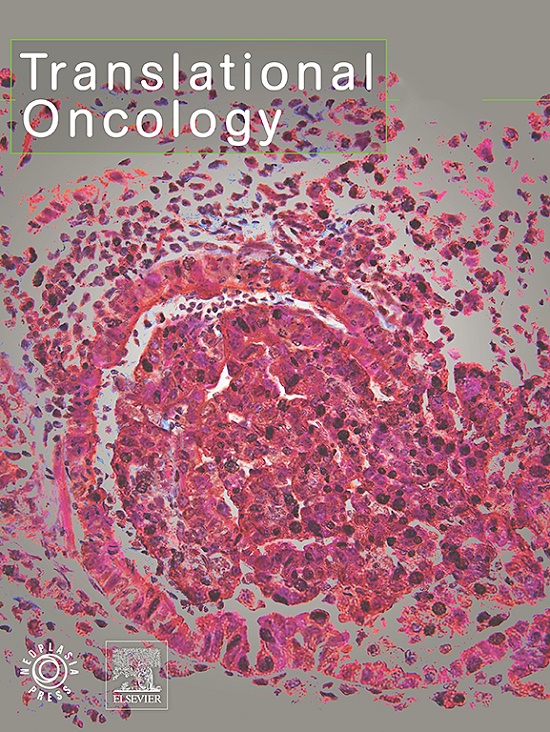Next-generation sequencing in early-stage multiple primary lung cancer: The prognostic significance of genomic accumulation status and BCL2L11del
IF 5
2区 医学
Q2 Medicine
引用次数: 0
Abstract
Objective
This study aimed to define the genomic features of tumors and to delineate the potential mutational pattern underlying the prognosis of patients using large-panel next-generation sequencing (NGS) assays. Additionally, the study sought to explore the biological functions and prognostic significance of PRMT8 in BCL2L11del lung cancer.
Methods
A total of 53 patients were enrolled, with a total of 130 malignant tumors. Clinical variables were collected, and the NGS sequencing of a large panel of 116 tumor-associated genes was performed. According to the gene mutation series and the number of mutation sites, the patients were divided into a series of groups. We then utilized the TCGA-LUAD database to conduct differential gene expression analysis, KEGG enrichment analysis, GSEA, and prognostic evaluation. Cell experiments (transwell migration assays, wound healing assay, CCK8 assay, and apoptosis assay) were utilized to verify the roles of PRMT8 on A549 cell. Western blotting was used to investigate the effect of PRMT8 on the mTORC1 signaling pathway.
Results
The patients exceeding the IA stage were associated with a significantly shorter DFS than those in the IA stage (mean time: 27.5 vs. 50.6 months, p = 0.044), and BCL2L11del subsets were associated with a significantly worse DFS (31.9 vs. 50.2 months, p = 0.047). In the subgroups, the patients with a single gene mutation series with multiple gene mutation sites had a shorter DFS than those with a single mutation site (37.6 vs. 53.9 months, p = 0.047); and those with four gene series with over four mutation sites displayed a longer DFS than those with four sites (25.7 vs. 58 months, p = 0.034). In a Cox Multivariate analysis, exceeding the IA stage and a BCL2L11del mutation were considered unfavorable independent prognostic factors (HR = 5.102, 95 %CI: 1.526 to 17.054; p = 0.008, and HR = 6.010, 95 %CI: 1.636 to 22.079; p = 0.007, respectively). A lower gene mutation series (≤2) was an independent factor for a longer DFS (HR = 0.276, 95 %CI: 0.086 to 0.882; p = 0.03). Our study found that PRMT8 was upregulated in the BCL2L11del group and associated with increased patient survival. Biological experiments showed that PRMT8 overexpression reduced cell viability, promoted apoptosis, inhibited migration and invasion, and suppressed mTORC1 pathway phosphorylation.
Conclusions
The prognosis of patients with early-stage MPLC may potentially be related to the accumulation status of gene mutation series and sites; their driving powers may offset each other. Taken together, the application of genomic profiling may prove to be useful for subdividing and precisely managing patients with MPLC. In addition, high expression of PRMT8 presented as an independent prognostic biomarker in lung cancer patients harboring the BCL2L11del mutation.

新一代测序在早期多发性原发性肺癌中的应用:基因组积累状态和BCL2L11del的预后意义
目的本研究旨在定义肿瘤的基因组特征,并利用大面板下一代测序(NGS)分析来描述潜在的突变模式,这些突变模式可能影响患者的预后。此外,本研究旨在探讨PRMT8在BCL2L11del肺癌中的生物学功能和预后意义。方法共纳入53例患者,恶性肿瘤共130例。收集临床变量,并对116个肿瘤相关基因进行NGS测序。根据基因突变序列和突变位点的数量,将患者分为一系列组。然后我们利用TCGA-LUAD数据库进行差异基因表达分析、KEGG富集分析、GSEA和预后评估。通过细胞实验(transwell migration assay, wound healing assay, CCK8 assay, apoptosis assay)验证PRMT8在A549细胞中的作用。Western blotting检测PRMT8对mTORC1信号通路的影响。结果超过IA期患者的DFS明显短于IA期患者(平均时间:27.5个月vs 50.6个月,p = 0.044), BCL2L11del亚群患者的DFS明显差于IA期患者(31.9个月vs 50.2个月,p = 0.047)。在亚组中,具有多个基因突变位点的单基因突变系列患者的DFS短于具有单个突变位点的患者(37.6个月vs. 53.9个月,p = 0.047);具有4个突变位点以上的4个基因序列的患者比具有4个突变位点的患者的生存期更长(25.7个月比58个月,p = 0.034)。在Cox多变量分析中,超过IA期和BCL2L11del突变被认为是不利的独立预后因素(HR = 5.102, 95% CI: 1.526 ~ 17.054;p = 0.008, HR = 6.010, 95% CI: 1.636 ~ 22.079;P = 0.007)。较低的基因突变系列(≤2)是延长DFS的独立因素(HR = 0.276, 95% CI: 0.086 ~ 0.882;P = 0.03)。我们的研究发现,PRMT8在BCL2L11del组中上调,并与患者生存率增加相关。生物学实验表明,PRMT8过表达降低细胞活力,促进细胞凋亡,抑制迁移和侵袭,抑制mTORC1通路磷酸化。结论早期MPLC患者的预后可能与基因突变序列和位点的积累状况有关;它们的驱动力可能相互抵消。综上所述,基因组图谱的应用可能有助于细分和精确管理MPLC患者。此外,PRMT8的高表达在携带BCL2L11del突变的肺癌患者中被认为是一种独立的预后生物标志物。
本文章由计算机程序翻译,如有差异,请以英文原文为准。
求助全文
约1分钟内获得全文
求助全文
来源期刊

Translational Oncology
ONCOLOGY-
CiteScore
8.40
自引率
2.00%
发文量
314
审稿时长
54 days
期刊介绍:
Translational Oncology publishes the results of novel research investigations which bridge the laboratory and clinical settings including risk assessment, cellular and molecular characterization, prevention, detection, diagnosis and treatment of human cancers with the overall goal of improving the clinical care of oncology patients. Translational Oncology will publish laboratory studies of novel therapeutic interventions as well as clinical trials which evaluate new treatment paradigms for cancer. Peer reviewed manuscript types include Original Reports, Reviews and Editorials.
 求助内容:
求助内容: 应助结果提醒方式:
应助结果提醒方式:


